Imagine feeling exhausted no matter how much you rest, struggling with brain fog that makes even simple tasks feel overwhelming, or dealing with unexplained respiratory issues that won’t go away. For many, these symptoms persist for years without a clear diagnosis—until they discover a hidden culprit lurking in their environment: mold.
Over the last decade, awareness of how indoor mold growth impacts health has surged. While researchers are still uncovering the full extent of its effects on the body, one condition in particular has gained increasing recognition in the medical community—Chronic Inflammatory Response Syndrome (CIRS). First identified by Dr. Ritchie Shoemaker in 1998, CIRS is a complex, multi-system illness triggered by exposure to biotoxins, often from water-damaged buildings. Yet, despite its growing recognition, many people suffering from CIRS remain undiagnosed, unsure of why their health continues to decline.
So, what exactly is Chronic Inflammatory Response Syndrome, and how does mold exposure play a role? Let’s dive into the science behind CIRS, its symptoms, and what can be done to reclaim your health.
What is Chronic Inflammatory Response Syndrome?

Chronic Inflammatory Response Syndrome (CIRS), also known as Biotoxin Illness or Mold Illness, is a multi-system, multi-symptom condition triggered by exposure to biotoxins.¹’² This condition is the result of immune system dysfunction, from either being overworked or being unable to correctly respond to the biotoxins that have entered the body. While this autoimmune condition can be triggered by exposure to toxins such as dinoflagellates or diseases such as Lyme, the major instigator of CIRS is exposure to water-damaged buildings containing mold growth and its byproducts.³’⁴
So far, researchers have linked toxins from molds commonly found in water-damaged buildings, including Stachybotrys, Aspergillus, Penicillium, and Chaetomium, as instigators of adverse health reactions. Their ability to affect health largely rests on the size of the particles in question.⁵ As mold grows indoors, it reproduces by releasing microscopic spores into the surrounding environment.⁶’⁷ Some species of mold also produce microscopic toxins called mycotoxins when threatened, further adding to the toxic load within the environment.⁸ Due to the small size of these particles, they’re able to be inhaled, ingested, and absorbed into the body.
While the immune system will attempt to get rid of the foreign particles entering the body, chronic exposure to these indoor contaminants can lead to malfunctions, particularly in hypersensitive individuals. The mechanics behind the condition aren’t completely understood yet, but essentially, those who develop CIRS have a continuous but ineffective immune system response that leads to widespread inflammation throughout the body. As this exposure continues, chronic illness and symptoms settle in.
Symptoms of Chronic Inflammatory Response Syndrome
As a multi-system condition, inflammation triggered by mold exposure can lead to a wide range of symptoms. This is one of the reasons that Chronic Inflammatory Response Syndrome is often misdiagnosed, along with a lack of awareness of how indoor environments impact health.
Common symptoms of CIRS include:
- Fatigue
- Weakness
- Muscle and joint pain
- Light sensitivity
- Memory problems and brain fog
- Headaches
- Respiratory issues
- Mood swings
- Skin sensitivity
- Digestive issues and pain
Typically, the condition is diagnosed by an assessment of exposure history, genetic predispositions based on HLA susceptibility, and specific biomarkers. From there, thorough testing of the home by a qualified mold inspector will be required to determine if this was the source of the exposure.

Is Chronic Inflammatory Response Syndrome Real?
Yes! And it’s something you should absolutely be aware of.
With the number of water-damaged buildings on the rise, it’s more important than ever not only to maintain an awareness of exposure-related illnesses like CIRS but also how our indoor spaces influence our wellness.⁹ The health toll of CIRS will persist as long as the exposure to the contaminants persists, especially for those particularly sensitive to mold. That’s why one piece of treating this autoimmune condition is to reduce exposure so that these contaminants aren’t continually entering the body and wreaking havoc.
To accomplish this, the toxic environment must be properly decontaminated. With a comprehensive mold inspection, those suffering from CIRS will be able to determine the state of their environment and have a roadmap in place to create a safe indoor environment that allows them to heal.
Being aware of our indoor environments and the health toll of mold exposure can also lead to recognizing and diagnosing conditions such as CIRS much more quickly. Far too many hypersensitive individuals continue to suffer from chronic illness due to exposure because of the lack of awareness given to indoor contaminants like mold. Taking a closer look at our indoor environments can help eliminate this current issue.
How to Deal With Chronic Inflammatory Response Syndrome
There are multiple steps needed to begin treating Chronic Inflammatory Response Syndrome, including focusing on the body and the exposure location.
Identifying and Eliminating Mold Exposure
The first step in addressing CIRS is determining where the exposure is coming from. One of the most effective ways to do this is by using The Dust Test. This test analyzes settled dust in your home to identify mold spores, mycotoxins, and bacteria that could be contributing to your symptoms. Because people spend most of their time at home, starting with a dust analysis can provide valuable insights into potential contamination sources.
If no significant contaminants are detected at home, other spaces like workplaces and vehicles should be evaluated. The steps for ending exposure will vary based on where you find the source. If it’s not in the home, it’s best to reach out to a professional to get their input on the best next steps.
However, if there are high levels of mold shown, it’s time to contact a qualified mold inspector.
Professional Mold Inspection
Not all mold inspections are created equal, so it is crucial to hire a qualified professional who understands the health implications of mold exposure. A proper inspection should take several hours and include various testing methods, such as:
- Identifying the species of mold present
- Quantifying mold spore levels
- Checking for contamination in HVAC systems
- Assessing the presence of mycotoxins and bacteria
A thorough inspection ensures that any sources of mold are properly identified, allowing for an effective remediation plan to be developed.
Proper Remediation Strategies
Once contamination is confirmed, professional mold remediation must be performed. Effective remediation follows three essential principles:
- Properly remove the mold sources. This includes physically removing affected materials rather than just treating surfaces with chemicals.
- Identify and fix the moisture problems. Mold growth is fueled by water and humidity, so addressing leaks, condensation, and humidity imbalances is crucial to preventing recurrence.
- Remove all contamination. This includes not only mold but also mycotoxins, bacteria, and particulate matter that can trigger inflammation in individuals with CIRS.
If remediation is not thorough, residual contaminants can continue to cause symptoms, making recovery impossible.
Healing the Body After Mold Exposure

Even after mold is removed from the environment, those suffering from CIRS must take steps to detoxify their bodies. This process requires medical guidance, as not all healthcare professionals are familiar with biotoxin-related illnesses. Finding a practitioner experienced in CIRS, environmental medicine, or functional medicine can be invaluable.
Detoxification Protocols
Each person's detoxification needs will be different, but common strategies include:
- Binders: Substances like activated charcoal, bentonite clay, and cholestyramine help bind toxins in the gut for elimination.
- Liver and kidney support: The body's detox pathways must function optimally. This can be achieved through hydration, proper nutrition, and liver-supporting supplements.
- Sweating therapy: Saunas, exercise, and Epsom salt baths help facilitate toxin removal through the skin.
- Nasal and sinus treatments: Many mold-exposed individuals benefit from nasal sprays and sinus rinses to clear mold spores from the respiratory system.
- Anti-inflammatory and immune support: Supplements such as omega-3 fatty acids, glutathione, and vitamin D can help modulate the immune response and support healing.
Recovery from CIRS is not immediate and may require months or even years of dedication to detoxification and immune system regulation. Don’t get discouraged, though! Continue to prioritize those healthier days to come.
How to Prevent CIRS

The best way to prevent CIRS is to ensure that your home remains a safe indoor environment with low levels of contaminants.
Prevention itself not only helps remove mold spores from an indoor environment, lowering the chances that they’ll stumble into a habitable environment, but it also helps remove the components needed for growth. Mold growth needs two main ingredients for life: food and water. Given these, a spore can transition into a mold colony in 24–48 hours. By eliminating these two things, any lucky spore that makes its way inside never gets a chance to grow.
Steps to prevent indoor mold growth include:
- Maintaining indoor humidity between 35-50%
- Creating airflow by turning on the exhaust fans
- Cracking a door or window while showering
- Deep cleaning regularly using botanical products and a microfiber rag
- Maintain appliances such as the dishwasher, refrigerator, and washing machine
- Using a HEPA vacuum cleaner
- Investing in air purification
- Regularly inspecting moldy hotspots
- Servicing the HVAC bi-annually
- Make sure the exhaust ducts don’t pump the moist air into the attic
- Fixing leaks immediately
- Keeping windows and doors closed on humid days
- Purchasing a dehumidifier if needed
- Inspect exterior windows and doors for any gaps from loose caulking or cracks
- Take a look at the grading around the outside of the home to make sure it’s not sloped towards the house
- Testing the home annually with The Dust Test
This list isn’t exhaustive, but it’s a great way to get started on a safe indoor environment. Don’t feel like you have to jump in with both feet, though. That can lead you to feel overwhelmed. Choose a few and work on accomplishing them before moving on to the next step.
A few additional steps include testing any new homes for problems before purchasing and listening to your body! If it’s telling you that there’s something wrong with the environment around you, listen and avoid that space!
Safeguarding Your Well-Being

Addressing Chronic Inflammatory Response Syndrome requires a multi-faceted approach that prioritizes both environmental and personal health. While reducing mold exposure is the foundation of recovery, ongoing awareness of indoor air quality and proactive prevention measures are equally critical. By ensuring proper home maintenance, regular testing, and targeted detoxification strategies, those affected by CIRS can take meaningful steps toward healing.
Ultimately, CIRS highlights the profound impact that our indoor environments have on overall wellness. As research continues to uncover the intricate relationship between mold exposure and chronic inflammation, increasing awareness and education can help prevent unnecessary suffering. Whether through diligent home care or informed medical guidance, taking action today can lead to a healthier, safer future free from the burden of environmental illness.
- Shoemaker RC, House D, Ryan J, Vasoactive intestinal polypeptide (VIP) corrects chronic inflammatory response syndrome (CIRS) acquired following exposure to water-damaged buildings. Health, 2013;5 (3): 396-401
- Milani, K. (2017). Chronic inflammatory response syndrome diagnosis and treatment.
- Berndtson, K. (2019). Chronic Inflammatory Response Syndrome: Overview, Diagnosis, and Treatment. consulté le, 11.
- MCMAHON, Scott W. An Evaluation of Alternate Means to Diagnose Chronic Inflammatory Response Syndrome and Determine Prevalence. Medical Research Archives, [S.l.], v. 5, n. 3, Mar. 2017. ISSN 2375-1924. Available at: <https://esmed.org/MRA/mra/article/view/1125>.
- Occupational Safety and Health Administration. (n.d.). Mold. OSHA. Retrieved from https://www.osha.gov/mold
- Nchh. (n.d.). Mold. NCHH. Retrieved from https://nchh.org/information-and-evidence/learn-about-healthy-housing/health-hazards-prevention-and-solutions/mold/
- Environmental Protection Agency. (n.d.). Mold. EPA. Retrieved from https://www.epa.gov/mold.
- Centers for Disease Control and Prevention. Basic facts about mold and dampness. Centers for Disease Control and Prevention. Retrieved from https://www.cdc.gov/mold/faqs.htm.
- World Health Organization. (n.d.). Mycotoxins. World Health Organization. Retrieved from https://www.who.int/news-room/fact-sheets/detail/mycotoxins.
Must-Have Indoor Air Quality Tools
-
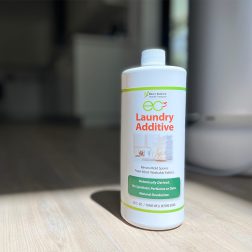
EC3 Laundry Additive
Add EC3 to every rinse cycle to rinse away mold, bacteria and musty odors from...
-
$23.00 SHOP NOW -
Sale
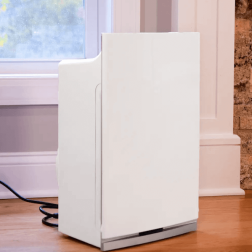
Intellipure Compact Air Purifier
Buy one Compact, get one free. Simply add one to your cart, and a second...
-
Original price was: $299.00.$199.00Current price is: $199.00. SHOP NOW -
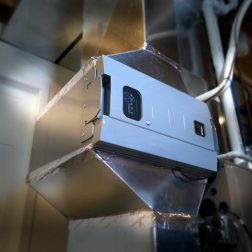
Intellipure SuperV Whole House Air Purifier
Turn your HVAC into a filtration system, removing 99% of ultrafine particles including airborne mold,...
-
$2,000.00 – $2,995.00 SHOP NOW -
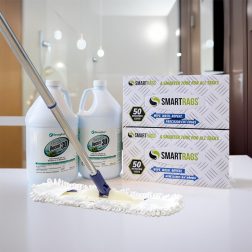
HomeCleanse Cleaning
Take your cleaning to the next level buying all the tools we use to keep...
-
$299.00 – $549.00 SHOP NOW -
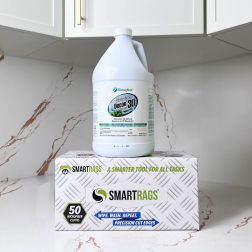
Mold & Bacteria Contents Cleaning
Remove harmful pollutants that accumulate in the dust of your home. (Options available for renters...
-
$99.00 – $349.00 SHOP NOW -

EC3 Mold Solution Concentrate
Micro Balance EC3 Mold Solution Concentrate is a natural botanical that removes mold spores, bacteria,...
-
$33.00 SHOP NOW -
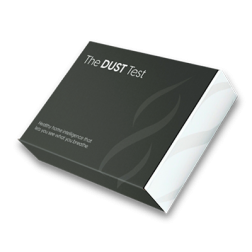
The Dust Test
The Dust Test is a comprehensive at-home test that helps you identify mold and toxins...
-
$274.00 SHOP NOW -
Sale
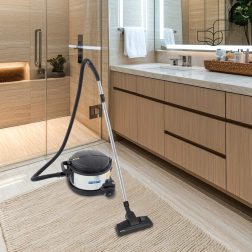
EuroClean 4 Gallon Hepa Vacuum
The Euroclean GD930HSP is a 4 Gallon Dry HEPA Vacuum that meets the EPA's standards...
-
Original price was: $849.00.$619.00Current price is: $619.00. SHOP NOW -
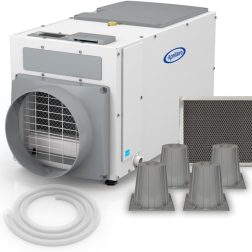
AprilAire E080 Professional Dehumidifier Bundle
Includes all the dehumidifier accessories you will need. Our Aprilaire E080 comes with a drain...
-
$1,499.99 SHOP NOW
